Themed collection Most popular 2019-2020 supramolecular chemistry articles

Tuning the stability of organic radicals: from covalent approaches to non-covalent approaches
Covalent and non-covalent approaches to tune the stability of organic radicals through steric effects and the delocalization of spin density.
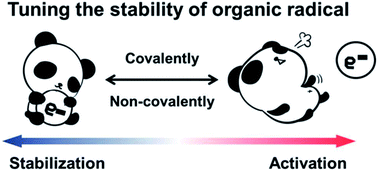
Chem. Sci., 2020,11, 1192-1204
https://doi.org/10.1039/C9SC06143F
Shapeshifting molecules: the story so far and the shape of things to come
This review describes the synthesis and application of shapeshifting molecules, whose covalent skeletons dynamically reconfigure in response to their surroundings.
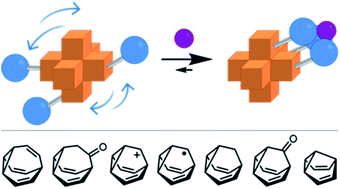
Chem. Sci., 2020,11, 324-332
https://doi.org/10.1039/C9SC05482K
Polyoxometalates as components of supramolecular assemblies
The non-covalent interactions between polyoxometalates and inorganic- and organic-based moieties give rise to functional nanoassemblies with diverse potential in applied science.
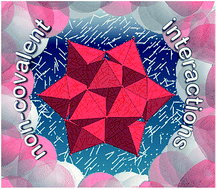
Chem. Sci., 2019,10, 4364-4376
https://doi.org/10.1039/C9SC00979E
Platinum(II) non-covalent crosslinkers for supramolecular DNA hydrogels
We report a serendipitous finding of platinum(II) complexes serving as non-covalent crosslinkers for the fabrication of supramolecular DNA hydrogels.
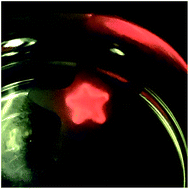
Chem. Sci., 2020,11, 3241-3249
https://doi.org/10.1039/C9SC05910E
Apoptosis-inducing activity of a fluorescent barrel-rosette M+/Cl− channel
We report a 2-hydroxy-N1,N3-diarylisophthalamide-based self-assembled channel that cotransports M+/Cl− and induces apoptotic cell death.

Chem. Sci., 2020,11, 2420-2428
https://doi.org/10.1039/C9SC06520B
s-Block metal ions induce structural transformations between figure-eight and double trefoil knots
The presence or absence of s-block metal ions induces reversible structural transformation of molecular knots.
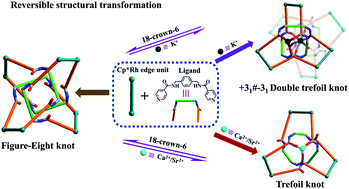
Chem. Sci., 2020,11, 1226-1232
https://doi.org/10.1039/C9SC05796J
Switchable electrical conductivity in a three-dimensional metal–organic framework via reversible ligand n-doping
Redox-active ligands are used to reversibly tune electrical conductivity in a porous 3D metal–organic framework (MOF).

Chem. Sci., 2020,11, 1342-1346
https://doi.org/10.1039/C9SC06150A
Conformational control of Pd2L4 assemblies with unsymmetrical ligands
Steric and geometric constraints were used to design unsymmetrical ditopic ligands that form single Pd2L4 cage isomers with high fidelity.
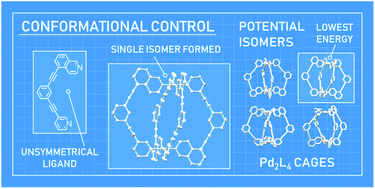
Chem. Sci., 2020,11, 677-683
https://doi.org/10.1039/C9SC05534G
Bidirectional enantioselective synthesis of bis-benzofuran atropisomeric oligoarenes featuring two distal C–C stereogenic axes
We report the bidirectional enantioselective synthesis of bis-benzofuran atropisomeric oligoarenes featuring two distal C–C stereogenic axes. These are controlled by a two-fold central-to-axial chirality conversion upon oxidative aromatization.

Chem. Sci., 2020,11, 403-408
https://doi.org/10.1039/C9SC04378K
Unique aqueous self-assembly behavior of a thermoresponsive diblock copolymer
A new amphiphilic diblock copolymer prepared via polymerization-induced self-assembly forms spheres, worms, vesicles or lamellae in aqueous solution on adjusting the temperature.
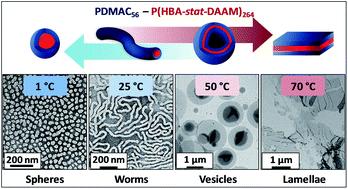
Chem. Sci., 2020,11, 396-402
https://doi.org/10.1039/C9SC04197D
Extraction and transport of sulfate using macrocyclic squaramide receptors
Lipophilic macrocycles efficiently extract sulfate ions from water into chloroform and transport this ion across a bulk liquid membrane in the presence of competing anions (chloride, nitrate and dihydrogenphosphate).
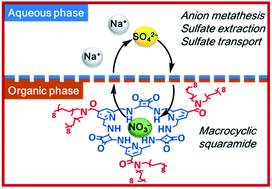
Chem. Sci., 2020,11, 201-207
https://doi.org/10.1039/C9SC04786G
Anion carriers as potential treatments for cystic fibrosis: transport in cystic fibrosis cells, and additivity to channel-targeting drugs
Synthetic anion transporters are active in cystic fibrosis cells, and are additive to clinically-approved drugs, suggesting new combination therapies for this lethal genetic condition.
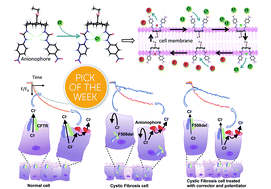
Chem. Sci., 2019,10, 9663-9672
https://doi.org/10.1039/C9SC04242C
Rational design and implementation of a cucurbit[8]uril-based indicator-displacement assay for application in blood serum
In this study, we report the first supramolecular indicator displacement assay (IDA) based on cucurbit[n]uril (CBn) host and a [2.2]paracyclophane derivative as indicator that is operational in blood serum.
![Graphical abstract: Rational design and implementation of a cucurbit[8]uril-based indicator-displacement assay for application in blood serum](/en/Image/Get?imageInfo.ImageType=GA&imageInfo.ImageIdentifier.ManuscriptID=C9SC00705A&imageInfo.ImageIdentifier.Year=2019)
Chem. Sci., 2019,10, 6584-6593
https://doi.org/10.1039/C9SC00705A
Unusual confinement properties of a water insoluble small peptide hydrogel
A water insoluble peptide-hydrogel that shows unique compartmentalization by not allowing any exchange to and from the hydrogel and can protect enzymes from denaturation.
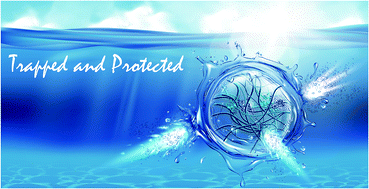
Chem. Sci., 2019,10, 5920-5928
https://doi.org/10.1039/C9SC01754B
Oligoprolines guide the self-assembly of quaterthiophenes
Oligoprolines of differing lengths control the self-assembly of quaterthiophenes into mono-layered or double-layered sheets, or helically twisted ribbons.
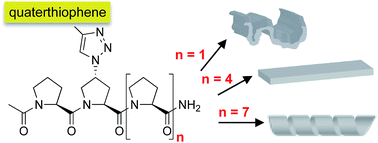
Chem. Sci., 2019,10, 5391-5396
https://doi.org/10.1039/C8SC05742G
Supramolecular chirality transformation driven by monodentate ligand binding to a coordinatively unsaturated self-assembly based on C3-symmetric ligands
A supramolecular chirality transition driven by monodentate ligand binding, the present strategy shows promise for the rational design of dynamic coordination chirality capable of alternating between chiral objects of different shapes driven by a specific external stimulus.
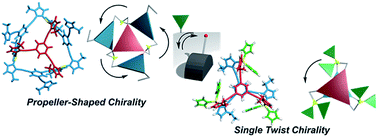
Chem. Sci., 2019,10, 4236-4245
https://doi.org/10.1039/C9SC00399A
Halogenated building blocks for 2D crystal engineering on solid surfaces: lessons from hydrogen bonding
We test whether the similarities between halogen and hydrogen bonds could be used to design a surface-confined halogen-bond based network.
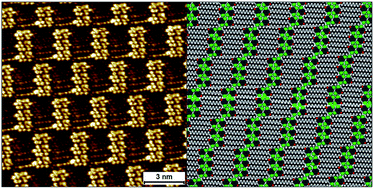
Chem. Sci., 2019,10, 3881-3891
https://doi.org/10.1039/C8SC04499F
Supramolecular cages as differential sensors for dicarboxylate anions: guest length sensing using principal component analysis of ESI-MS and 1H-NMR raw data
A differential sensor based on cages discriminate guests according to their length.
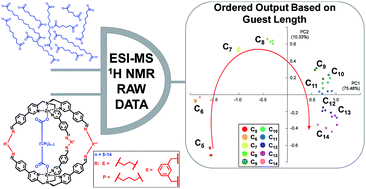
Chem. Sci., 2019,10, 3523-3528
https://doi.org/10.1039/C8SC05527K
Photo-responsive cyclodextrin/anthracene/Eu3+ supramolecular assembly for a tunable photochromic multicolor cell label and fluorescent ink
A photoresponsive supramolecular assembly was constructed and presented multi-color fluorescence emissions in several environments including solution, PVA and living cells.
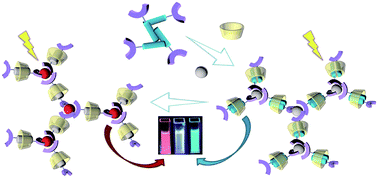
Chem. Sci., 2019,10, 3346-3352
https://doi.org/10.1039/C9SC00026G
Light emission enhancement by supramolecular complexation of chemiluminescence probes designed for bioimaging
Chemiluminescence offers advantages over fluorescence for bioimaging, since an external light source is unnecessary with chemiluminescent agents.
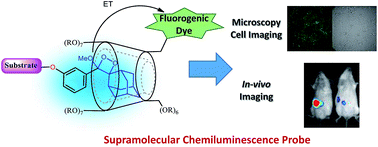
Chem. Sci., 2019,10, 2945-2955
https://doi.org/10.1039/C8SC05174G
Towards homochiral supramolecular entities from achiral molecules by vortex mixing-accompanied self-assembly
By using a vortex mixing-accompanied self-assembly strategy, homochiral entities with controlled handedness were obtained from exclusively achiral molecules.
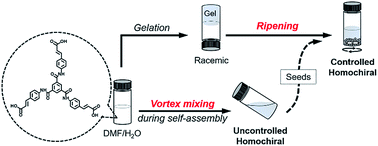
Chem. Sci., 2019,10, 2718-2724
https://doi.org/10.1039/C8SC04687E
Synergistic self-seeding in one-dimension: a route to patchy and block comicelles with uniform and controllable length
By manipulating both the dissolution sequence of polymer crystallites and the growth rate of polymer unimers, patchy comicelles and block comicelles with uniform and controllable length can be obtained.
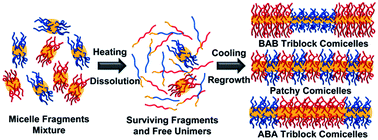
Chem. Sci., 2019,10, 2280-2284
https://doi.org/10.1039/C8SC04705G
Minimalistic supramolecular proteoglycan mimics by co-assembly of aromatic peptide and carbohydrate amphiphiles
A modular two-component supramolecular hydrogel composed of a peptide core and carbohydrate shell as a minimalistic mimic of proteoglycans.
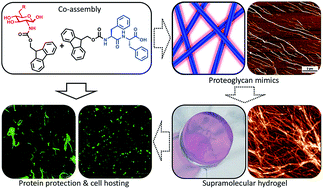
Chem. Sci., 2019,10, 2385-2390
https://doi.org/10.1039/C8SC04361B
Efficient hydrogen bonding recognition in water using aryl-extended calix[4]pyrrole receptors
For a series of six-membered neutral polar guests, the cavity of 1oo provides a better hydrogen-bond donor environment than water.
![Graphical abstract: Efficient hydrogen bonding recognition in water using aryl-extended calix[4]pyrrole receptors](/en/Image/Get?imageInfo.ImageType=GA&imageInfo.ImageIdentifier.ManuscriptID=C8SC05034A&imageInfo.ImageIdentifier.Year=2019)
Chem. Sci., 2019,10, 2413-2423
https://doi.org/10.1039/C8SC05034A
Fluorinated synthetic anion carriers: experimental and computational insights into transmembrane chloride transport
A series of fluorinated tripodal tris-thioureas function as highly active anion transporters across lipid bilayers and cell membranes.
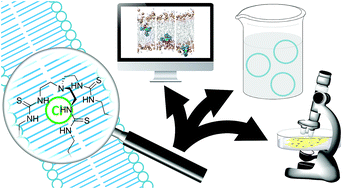
Chem. Sci., 2019,10, 1976-1985
https://doi.org/10.1039/C8SC05155K
Waterproof architectures through subcomponent self-assembly
Construction of metal–organic containers that are soluble and stable in water can be challenging – we present diverse strategies that allow the synthesis of kinetically robust water-soluble architectures via subcomponent self-assembly.
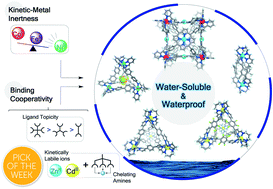
Chem. Sci., 2019,10, 2006-2018
https://doi.org/10.1039/C8SC05085F
Dynamic polyimine macrobicyclic cryptands – self-sorting with component selection
Self-assembling macrobicyclic cryptand-type organic cages display remarkable self-sorting behavior with efficient component selection.
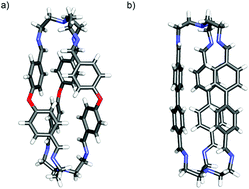
Chem. Sci., 2019,10, 1836-1843
https://doi.org/10.1039/C8SC04598D
Chemical and photochemical DNA “gears” reversibly control stiffness, shape-memory, self-healing and controlled release properties of polyacrylamide hydrogels
Stimuli-responsive polyacrylamide hydrogels crosslinked by glucosamine–boronate/G-quadruplexes or azobenzene-functionalized DNA reveal controlled stiffness using chemical or photochemical triggers.
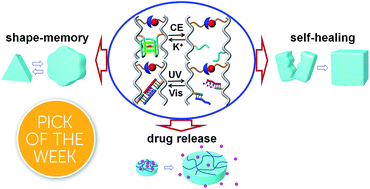
Chem. Sci., 2019,10, 1008-1016
https://doi.org/10.1039/C8SC04292F
Nanobowls with controlled openings and interior holes driven by the synergy of hydrogen bonding and π–π interaction
Nanobowls with controlled openings and interior holes are created by self-assembly of homopolymers with hydrogen bonding and π–π interaction.
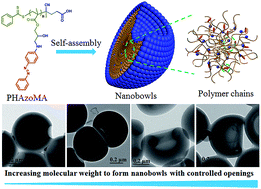
Chem. Sci., 2019,10, 657-664
https://doi.org/10.1039/C8SC03995J
Influence of metal coordination and light irradiation on hierarchical self-assembly processes
We unravel the impact of metal coordination and light irradiation on hierarchical self-assembly processes by combined theoretical and experimental results.
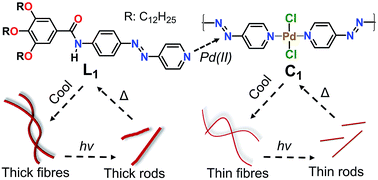
Chem. Sci., 2019,10, 752-760
https://doi.org/10.1039/C8SC03875A
About this collection
This specially curated collection pulls together some of the most popular articles from 2019 and 2020 in the field of supramolecular chemistry. The collection presents some outstanding contributions to the field, ranging from waterproof architectures to macrocyclic squaramide acceptors, and as with all Chemical Science articles – they are all completely free to access and read. We hope you enjoy browsing through this collection.
See also:
Most popular 2019-2020 inorganic, main group and crystal engineering chemistry articles
Most popular 2019-2020 materials and energy chemistry articles
Most popular 2019-2020 physical and theoretical chemistry articles
Most popular 2019-2020 organic chemistry articles
Most popular 2019-2020 catalysis articles
Most popular 2019-2020 analytical chemistry articles
Most popular 2019-2020 chemical biology articles
Most popular 2019-2020 review articles